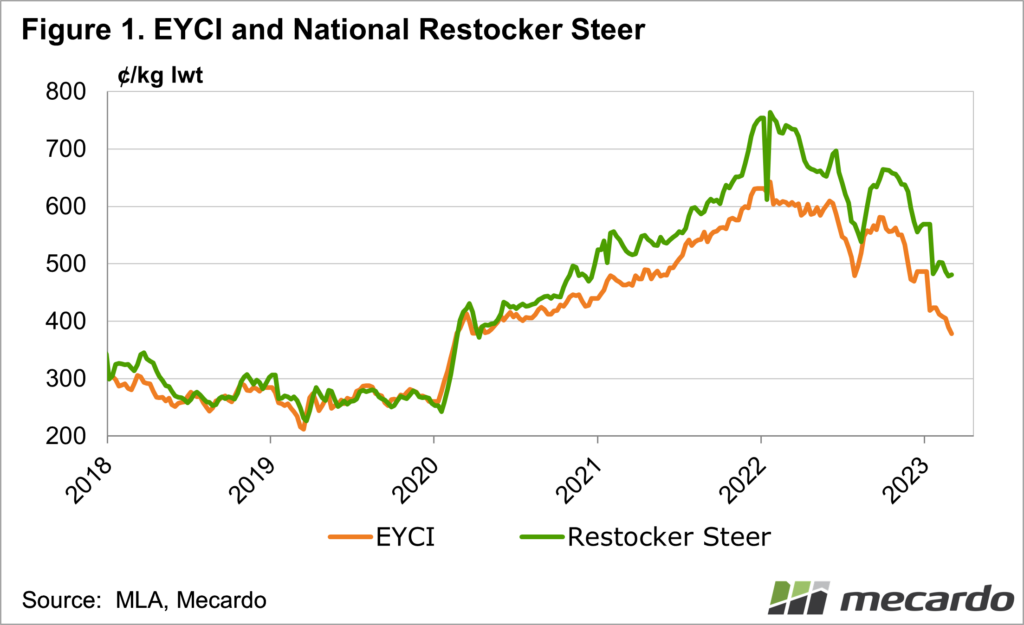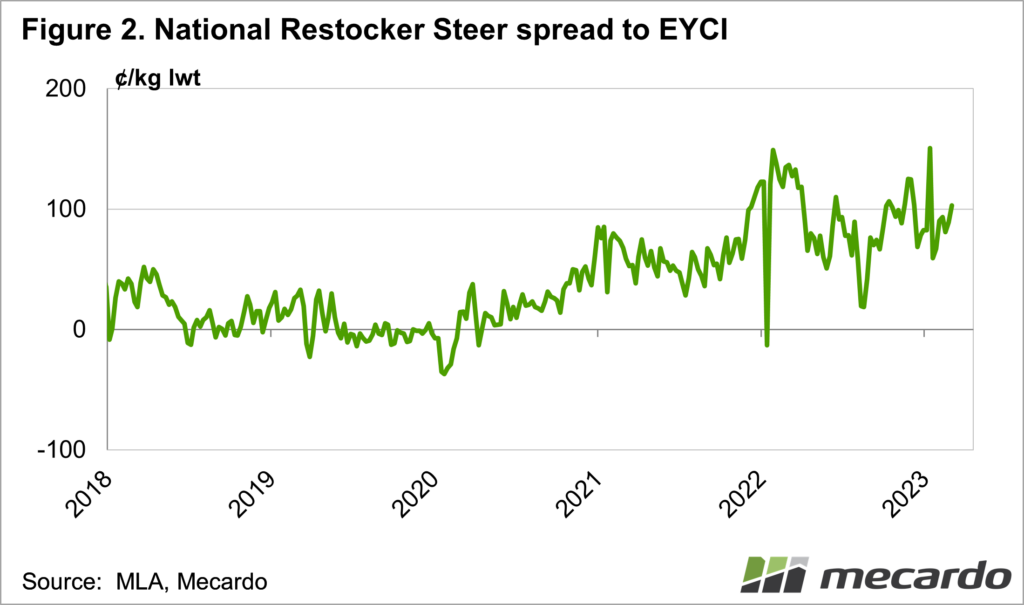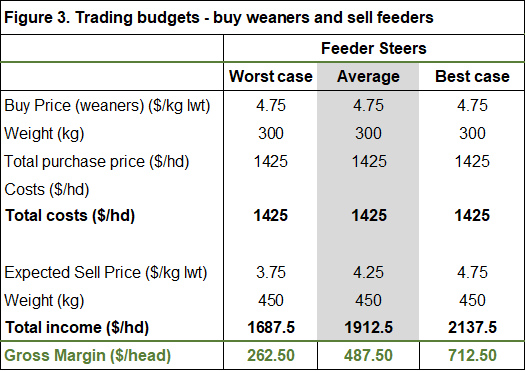The cattle market continues to fall, which is both good and bad for cattle traders. Those holding cattle will not be happy, but those standing out for the summer will be quietly pleased that buy prices are on the wane. Timing is everything in trading, here we look at the current value.
Every time we look at the cattle market lately it seems to have had another decline. Apart from a couple of brief spikes, the fall in the Eastern Young Cattle Indicator (EYCI) has been largely continuous since early 2022.
We know from analysis of international markets, exchange rates, and economic indicators that global cattle prices are likely to find support over the coming years. As such markets will turn around, and there will again be some super profits to be made from trading cattle. The question is when the turnaround will occur, and at what level.
Figure 1 shows the EYCI breaking through a pretty important support level of 400¢/kg lwt in the last fortnight. The EYCI hasn’t traded much between 300 and 400¢, which suggests the next stop is 300¢. This would be a far cry from the heady days of 600¢ plus, but we don’t think it will get there.
Some very basic technical analysis tells us the market should find some support around current levels, and export beef prices back this up. The issue of slaughter capacity remains, however, and any large increase in short-term supply will lead to heavy falls, like those of last week.
Also in figure 1 is the National Restocker Yearling Steer Indicator. Interestingly it has held in the face of a falling EYCI, suggesting restockers believe we are somewhere near the bottom. Figure 2 shows the Restocker Steer spread to the EYCI, and it’s still very strong. A premium of 100¢ isn’t unusual, but it certainly isn’t cheap.
Figure 3 shows our basic trading table for buying weaners and selling feeders. There is not much in it if prices continue to fall, but if they hold, the trade is reasonably profitable. A modest increase in feeder prices gives a 50% gross profit. That beats the interest rate pretty well.
What does it mean?
Cattle markets usually decline in the autumn, and the rainfall outlook isn’t all that positive, so there might not be any hurry to buy. By winter and early spring, things could be different, with the normal tighter supply pushing values up. The coming three months could represent the sweet spot for cattle buyers.
Have any questions or comments?
Key Points
- Cattle markets continue to decline, but restocker values have held steady in recent weeks.
- Markets should find some support around current levels, but slaughter capacity remains a headwind.
- Restocker cattle look like reasonable buying in the current market.
Click on figure to expand
Click on figure to expand
Trading budgets are indicative only and should be used as such with your own costs.
Data sources: MLA, Mecardo















